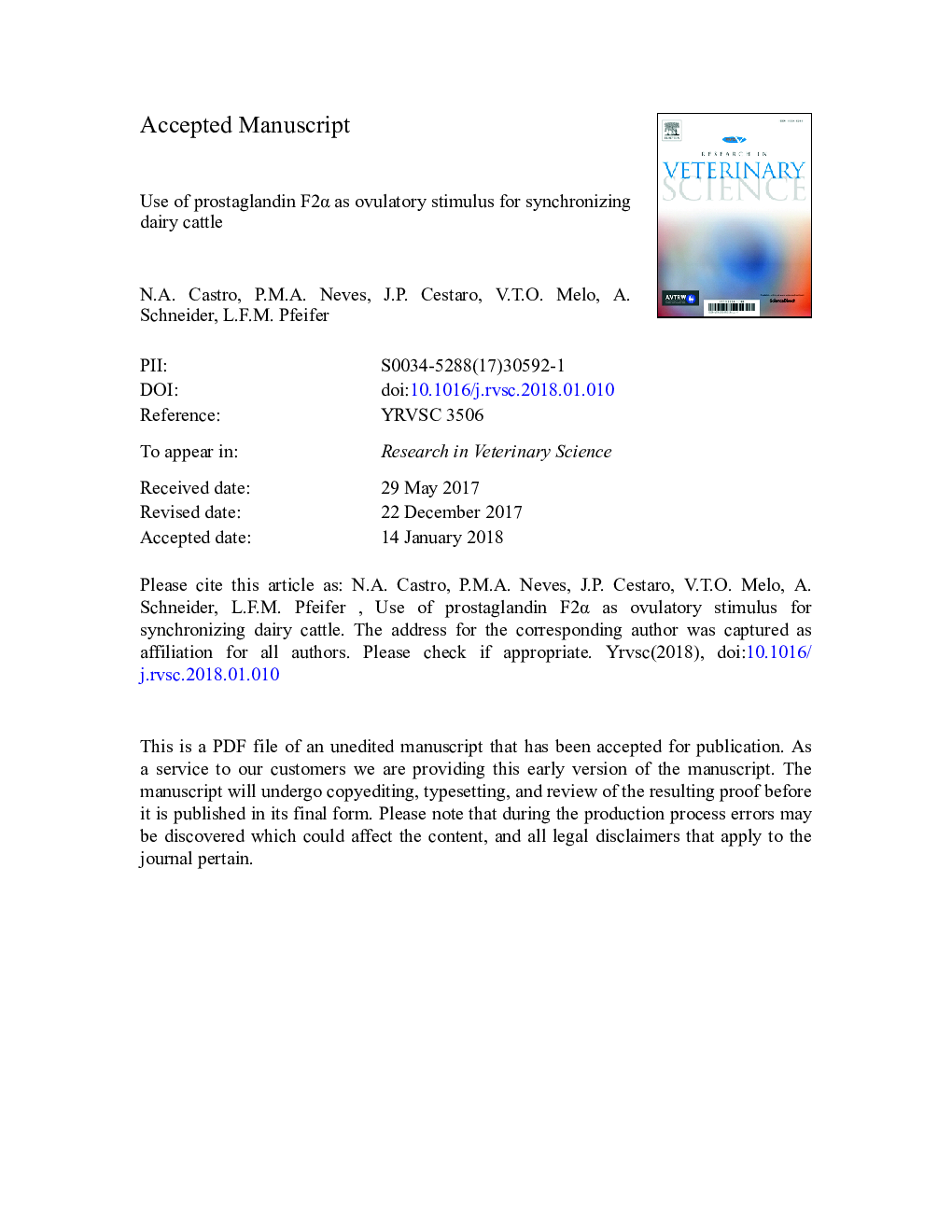| Article ID | Journal | Published Year | Pages | File Type |
|---|---|---|---|---|
| 8503989 | Research in Veterinary Science | 2018 | 13 Pages |
Abstract
The aim of this study was to evaluate if prostaglandin F2α (PGF) can be used to induce ovulation in a GnRH-progesterone based protocol. In Experiment 1 crossbred dairy cows (n = 32) were synchronized with a progesterone-GnRH based protocol for seven days, where the luteolytic dose of 150 μg PGF was given 24 h prior progesterone device removal (CIDR). On Day 8 cows were separated into two groups to receive: 1) 2 mL of Saline (Control Group, n = 15) or 2) 150 μg of PGF (PGF Group, n = 17). Ovulation rate was higher in the PGF than Control group (100% vs 53.3%, P = 0.001, Odds ratio = 30.88). The percentage of cows that ovulated synchronously tended to be higher in the PGF than Control group (P = 0.1, Odds ratio = 9.6). Experiment 2 was performed in a cross-over (3 Ã 3) design. Crossbred dairy cows (n = 25) received a CIDR for seven days and GnRH on Day 0. Seven days later 150 μg of PGF was given and the progesterone device was removed, and 24 h later cows were distributed into three groups to receive: 1) 2 mL of Saline (Control Group, n = 25), 2) 150 μg of PGF (PGF Group, n = 25) or 3) 1 mg of ECP (ECP Group, n = 23). Diameter of ovulatory follicle was larger in the PGF and Control than ECP Group (P = 0.002, Effect size > 4.0). Synchronized ovulation rate (between 72 and 96 h after CIDR removal) tended to be higher in PGF group in Control group (P = 0.1, Odds ratio = 0.35). Results suggest that PGF is equally efficient to ECP to induce synchronized ovulation in dairy cows subjected to progesterone-GnRH based protocols.
Related Topics
Life Sciences
Agricultural and Biological Sciences
Animal Science and Zoology
Authors
N.A. Castro, P.M.A. Neves, J.P. Cestaro, V.T.O. Melo, A. Schneider, L.F.M. Pfeifer,
